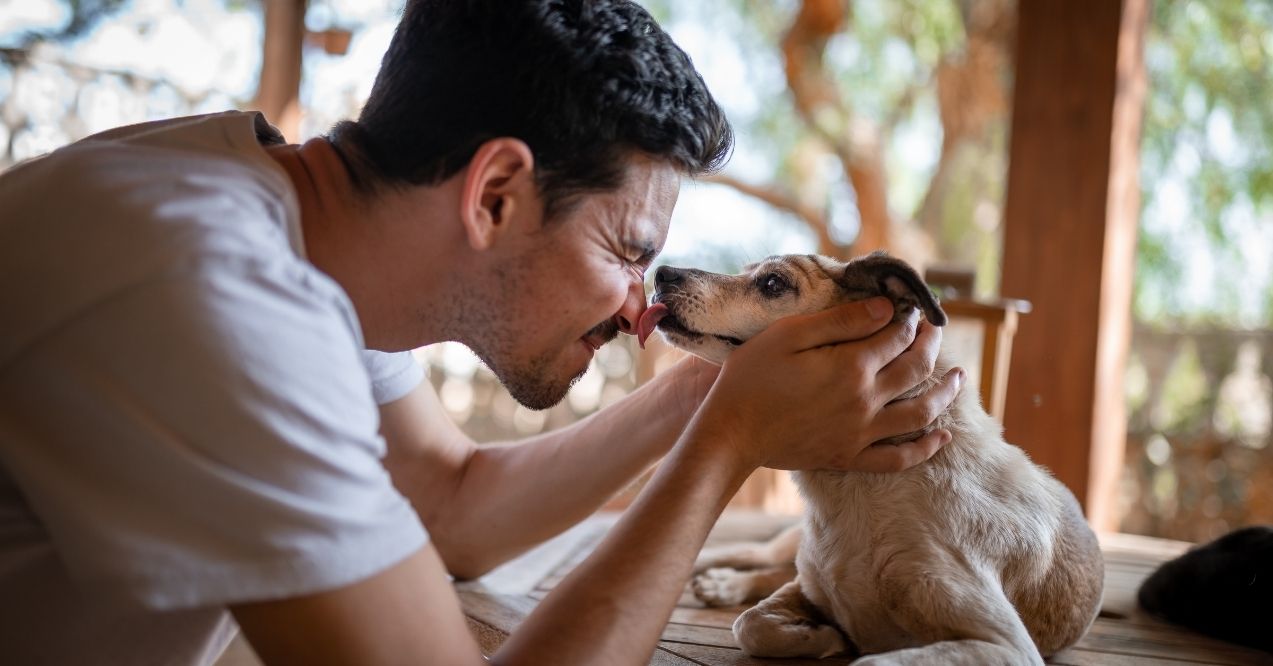Can You Get Parasites From Dogs?
We love our dogs deeply – they’re family members who share our homes, our couches, and sometimes even our beds. But while those puppy cuddles bring joy, many owners wonder about an uncomfortable topic: can you get parasites from dogs? The answer deserves your attention, though there’s no need for panic.
This guide walks you through which parasites dogs carry, how transmission actually happens, and practical ways to protect your household. You’ll learn realistic prevention habits that fit into your daily routine without turning your home into a sterile zone. Most importantly, you’ll discover how to maintain that close bond with your furry friend while keeping everyone healthy.
Can You Get Parasites From Dogs?
Yes, it’s possible to contract parasites from dogs, though it happens less often than you might think with proper care. These organisms, called zoonotic parasites, can move between animals and humans under certain conditions. The good news is that simple hygiene practices block most transmission routes effectively.
Not every parasite your dog encounters poses a threat to you. Many are species-specific and won’t affect humans at all. However, knowing how to tell if your dog has parasites helps you stay ahead of potential risks and protect your entire household.
Common Parasites That Can Spread
Several parasites can potentially move from dogs to their human companions:
- Roundworms – These intestinal worms spread through contaminated soil or feces, potentially causing organ damage in humans
- Hookworms – They penetrate skin, creating itchy trails, especially when walking barefoot on contaminated ground
- Tapeworms – Usually transmitted through infected fleas that get accidentally swallowed
- Giardia – This microscopic parasite spreads through contaminated water or surfaces, causing digestive issues
How Do These Parasites Spread to People?
Transmission typically happens through accidental contact with contaminated materials. Walking barefoot in your yard where an infected dog has defecated exposes you to hookworm larvae. Children playing in sandboxes or soil may accidentally ingest roundworm eggs on their hands.
Flea-borne tapeworms require you to swallow an infected flea, which sounds unlikely but can happen during close contact. Giardia spreads through contaminated water bowls or surfaces that haven’t been properly cleaned.
Are Dog Parasites Contagious to Humans?
When asking “are dog parasites contagious,” it helps to clarify what contagious really means here. Dog parasites don’t spread person-to-person like a cold or flu virus would. Instead, transmission requires specific conditions – usually involving parasite eggs or larvae in the environment.
You won’t catch parasites simply by petting an infected dog. The parasites need time to develop in the environment before becoming infective. This developmental period gives you opportunities to break the transmission cycle through regular cleaning and preventive measures.
Who’s Most at Risk?
Certain groups face higher vulnerability to parasitic infections from dogs:
- Young children often put hands in their mouths after playing outside or with pets. Toddlers exploring their environment may touch contaminated surfaces then eat without washing up. Their developing immune systems also provide less defense against parasites.
- Elderly individuals and those with weakened immune systems process infections less effectively.
- Pregnant women should take extra precautions as some parasites may affect fetal development.
- People undergoing chemotherapy or managing autoimmune conditions need heightened awareness about exposure risks.
Can You Get a Parasite From a Dog Licking You?
The chance of getting parasites from dog kisses remains extremely low, despite what worried pet owners might fear. While dogs do groom themselves and may carry microscopic parasite eggs on their tongues, transmission through licking alone rarely occurs. The eggs typically need time in the environment to become infective.
That said, limiting face licking makes sense for general hygiene, especially for young children or immunocompromised individuals. Teaching your dog alternative ways to show affection, such as gentle pawing or sitting close, maintains your bond while reducing any minimal risks.
Everyday Prevention Habits for Families

Creating parasite prevention routines doesn’t mean turning your home into a medical facility. Small, consistent habits integrated into your daily schedule provide powerful protection. The key lies in making these practices automatic rather than burdensome additions to your already busy life.
Think of prevention as a series of quick checkpoints throughout your day. Morning walks end with paw wipes at the door. Afternoon playtime includes a hand-washing reminder for kids. Evening cuddles happen after your dog’s monthly preventive treatment.
Clean-Up Tips
Keep sanitizing wipes or a towel by your door for quick paw cleaning after outdoor time. This 30-second habit removes potential parasite eggs before they enter your home. Store waste bags and hand sanitizer together, making proper disposal automatic.
During yard patrol, pick up feces daily using a dedicated tool you don’t touch directly. Parasites need time to develop in feces, so prompt removal breaks their lifecycle. Consider designating specific shoes for yard work that stay outside.
Parasite Treatment Options for Dogs
Monthly preventive medications target multiple parasites simultaneously, offering comprehensive protection for your pet. These treatments come as flavored chews, topical applications, or tablets that fit easily into your routine. Regular deworming schedules, typically every three months, eliminate any parasites before they multiply.
Consistency matters more than the specific product you choose. Learning how to get rid of parasites in dogs involves both treating current infections and preventing future ones. Work with your veterinarian to select appropriate preventives based on your dog’s lifestyle and local parasite risks.
Sharing Spaces—Is It Safe?
Letting dogs sleep in your bed or share furniture remains a personal choice that many families enjoy safely. Regular washing of bedding in hot water eliminates any parasite eggs that might be present. Vacuum upholstered furniture weekly, focusing on areas where your dog rests.
Face licking and food sharing present slightly higher risks worth considering. Instead of complete restriction, establish boundaries that work for your family. Perhaps your dog can share the couch but not your pillow, or give kisses on hands rather than faces.
Kids and High-Risk Family Members
Teaching children proper hygiene around pets becomes easier when you make it routine and positive. Create a “pet play protocol” – shoes stay on in the yard, hands get washed after playtime, and no fingers in mouths during dog activities. Post colorful reminder signs at child height near doors and sinks.
For immunocompromised family members, add extra layers of protection without isolation. They might wear gloves for yard work or use hand sanitizer more frequently. Assign someone else to handle pet waste duties when possible.
Does Your Dog’s Lifestyle Increase Risk?
A lap dog living in a high-rise apartment encounters different parasites than a farm dog roaming acres of land. Your dog’s daily habits, environment, and social interactions all influence their parasite risk profile.
Consider where your dog spends time, what they eat, and how they interact with their environment. These factors determine which parasites they’re most likely to encounter and how aggressive your prevention approach needs to be. Tailoring your strategy to your dog’s lifestyle provides better protection without unnecessary treatments.
Dogs That Dig or Eat Off the Ground
Dogs with strong digging instincts or those who scavenge during walks face increased exposure to soil-dwelling parasites. Roundworm and hookworm eggs thrive in dirt, especially in shaded, moist areas where dogs love to dig. These behaviors bring dogs into direct contact with contaminated soil.
Scavenging habits, whether eating dropped food or investigating animal feces, significantly raise infection risks. Training alternative behaviors and providing engaging toys may redirect these instincts while maintaining your dog’s natural curiosity.
Urban vs. Rural Dogs
City dogs navigating busy dog parks encounter parasites from numerous other pets in concentrated areas. High-traffic parks see rapid parasite egg accumulation, especially in popular potty spots. Urban dogs also face unique risks from rats and pigeons that carry their own parasites.
Rural dogs may contact livestock parasites or wildlife-specific organisms not found in cities. They’re more likely to encounter contaminated water sources or prey on infected rodents. Farm dogs need protection against parasites that affect both pets and agricultural animals.
Conclusion
Can humans get parasites from dogs? Yes, it’s possible, but highly preventable with informed care. The parasites that can pass between dogs and humans require specific conditions for transmission, giving you multiple opportunities to break their lifecycle. Regular preventive treatments for your dog, combined with simple hygiene habits, create robust protection for your entire household.
Yes, certain parasites can transmit from dogs to humans through contaminated feces, soil, or infected fleas, though proper hygiene prevents most transmission.
Direct transmission through bed-sharing is unlikely, but washing bedding weekly in hot water eliminates any potential parasite eggs.
Indoor dogs have lower exposure but can still contract parasites from contaminated items brought inside or during brief outdoor bathroom breaks.
Flea bites typically cause itchy welts but may transmit tapeworms if fleas are accidentally swallowed, or bacteria in rare cases.
Some parasite eggs can survive on soft surfaces temporarily, but regular vacuuming and washing effectively remove them before they become infective.
Advertisement. This site offers health, wellness, fitness and nutritional information and is designed for educational purposes only. You should not rely on this information as a substitute for, nor does it replace, professional medical advice, diagnosis, or treatment. If you have any concerns or questions about your health, you should always consult with a physician or other health-care professional. Do not disregard, avoid or delay obtaining medical or health related advice from your health-care professional because of something you may have read on this site. The use of any information provided on this site is solely at your own risk.



















